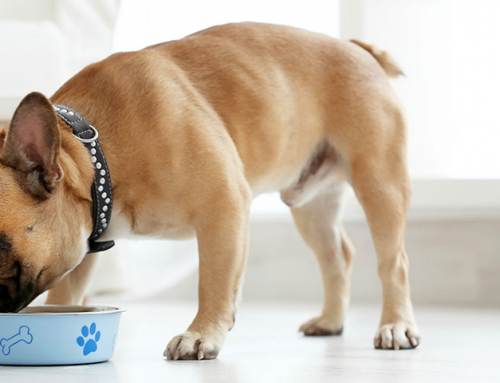Humans with diabetes typically check their blood glucose when deciding that they are going to eat. They then give themselves an appropriate dose of insulin (based on what they plan to eat) a few minutes prior to the meal. Since we are unsure if a diabetic pet is feeling hungry when we are scheduled to give an insulin injection, we typically give our pets insulin at the same time that we give them a meal. I personally prefer to give diabetic cats a meal of canned food and diabetic dogs a meal of canned and dry food in conjunction with each injection of insulin (Typically many pets look forward to canned food.) Once I see that the pet has eaten, I proceed with the insulin injection.
My preference is to have food available to diabetic pets at all times. If insulin requirements decrease (which could result in the blood glucose dropping too low following an insulin injection) the pet can go have a snack to avert an episode of hypoglycemia (low blood sugar). Of course, some pets are such chow hounds that any food left out will be gobbled up in 2 seconds flat; so leaving food out is not always feasible for extremely food motivated dogs. Remember that food motivated pets are often obese, and obesity is a predisposing factor to diabetes.






Leave A Comment